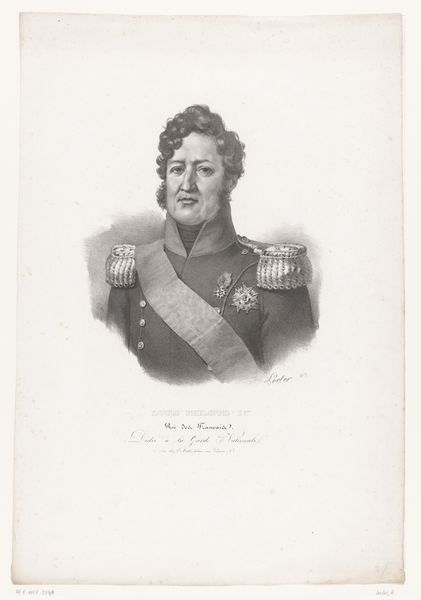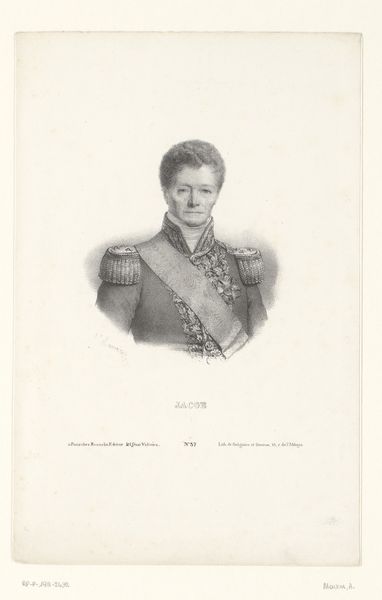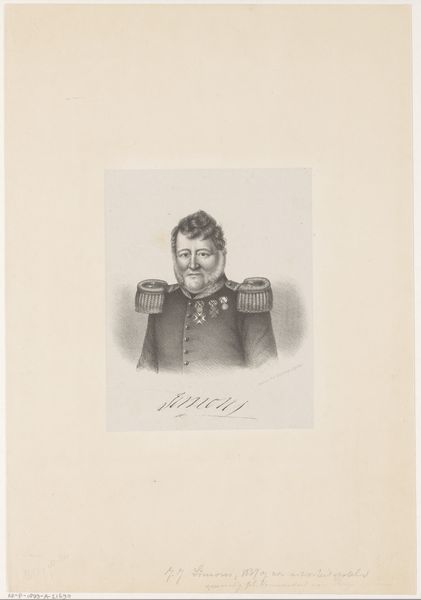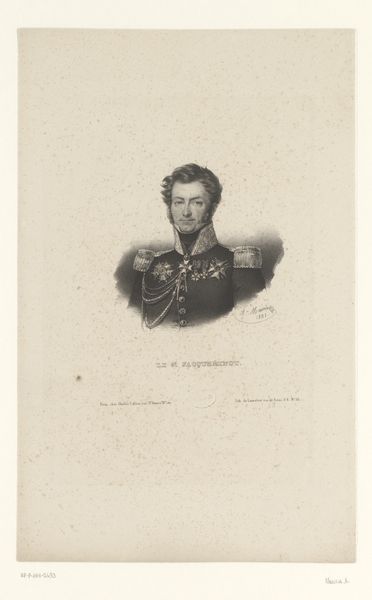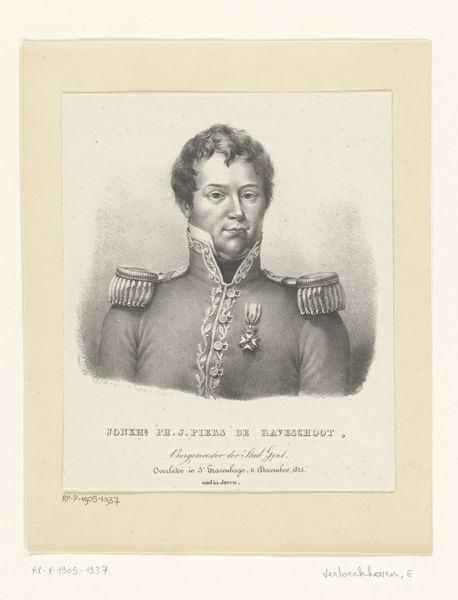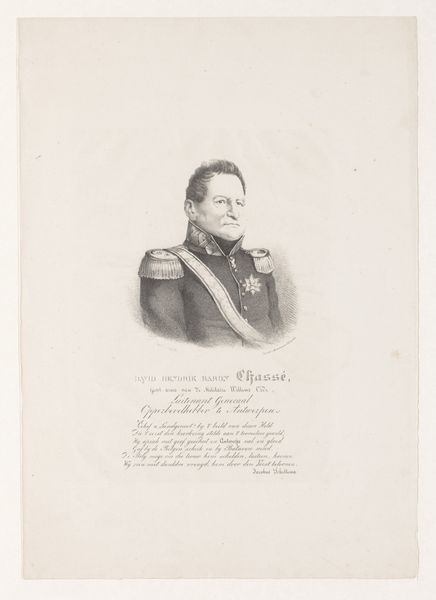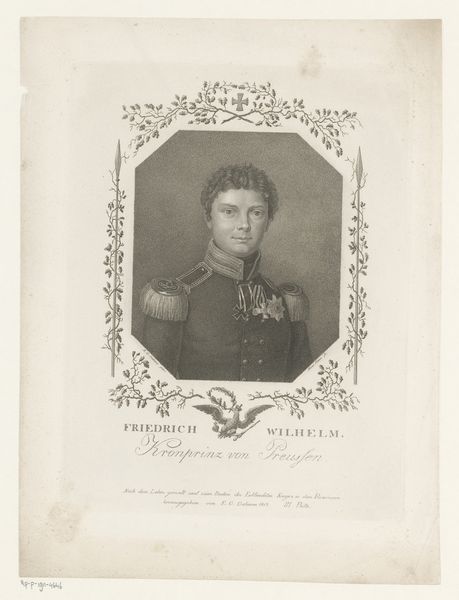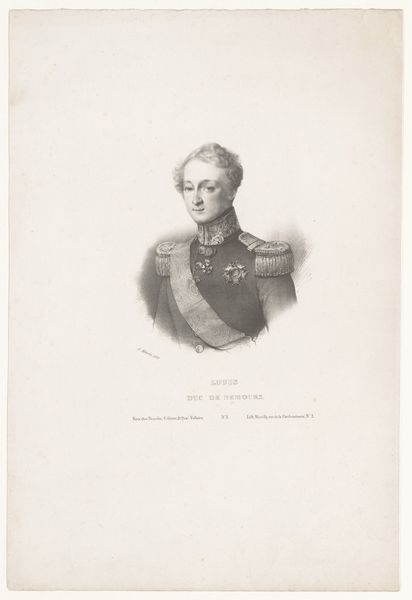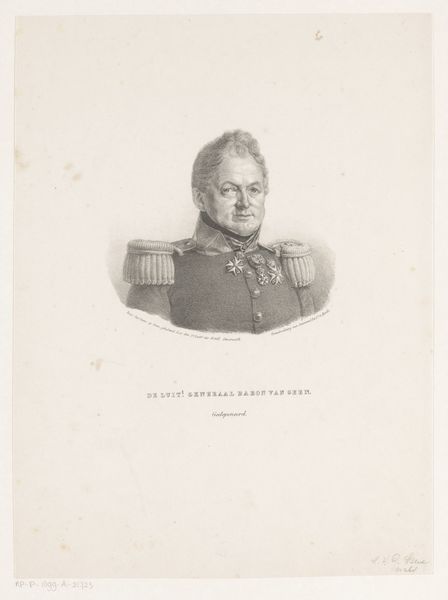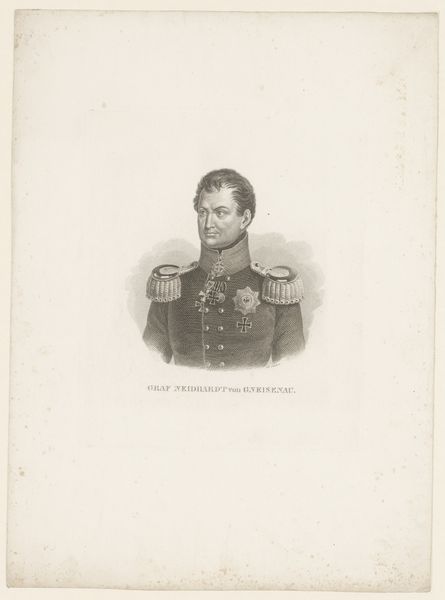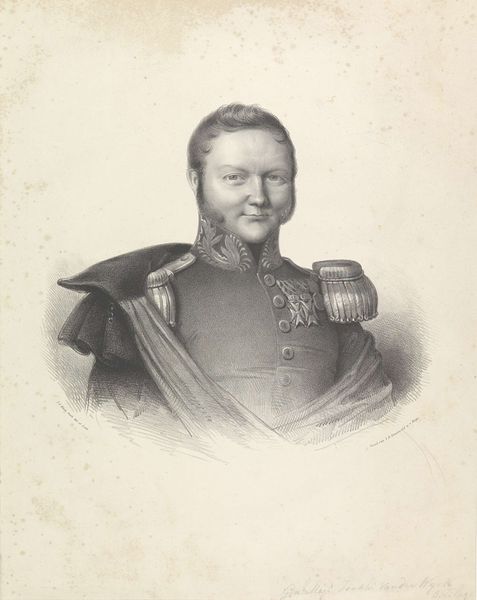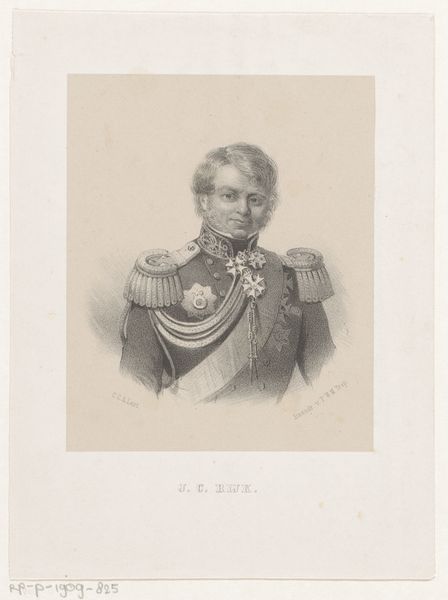
lithograph, print
#
portrait
#
lithograph
# print
#
pencil drawing
#
romanticism
#
portrait drawing
#
history-painting
Dimensions: height 350 mm, width 260 mm
Copyright: Rijks Museum: Open Domain
Curator: Here we have a lithograph dating from before 1831, titled "Portret van Andries Jan Jacob baron des Tombe" by Cornelis Kimmel. It depicts a formal portrait of a military figure. Editor: The stark simplicity strikes me. There's a subdued romanticism here; the subject gazes out with an air of self-importance, even against the relatively flat background. It feels…serious, almost severe. Curator: Absolutely, it captures that period of asserting status through visual representation. Portraits like these played a key role in constructing public identity, especially for those in positions of power like Baron des Tombe. Notice how the artist is using the visual vocabulary to cement the subject's social position, a military leader of stature. Editor: And lithography itself is significant here, isn’t it? Think about the materials—the shift from the direct touch of engraving or etching, to this printmaking technique. It allows for multiple reproductions, thus expanding the baron’s reach of influence, doesn’t it? Curator: Exactly! This wasn’t just about a likeness; it was about projecting power to a broader audience through accessible imagery. The romantic aesthetics were tools to elevate figures. It taps into a developing print culture—images manufactured to convey specific narratives of the Dutch leadership, of course for the audiences capable of viewing these in the 19th century. Editor: The subtle gradations, the way the artist coaxes form from a limited tonal range... it speaks to the rising craftsmanship present at the time. You know, to reproduce this, one must have some skills! These mass produced portraits aren't as cookie-cutter as we may assume. They’re still works that require time, effort, material, and expertise! Curator: I completely agree! By placing it within the context of its time, examining it not just as a single artwork, but also within a wide circulation of similar images, can offer many clues to social history and values of the time. It’s all woven together, really. Editor: Precisely. Thinking about its material origins – the resources, the artist’s training – enriches our understanding and invites new ways of seeing this portrait.
Comments
No comments
Be the first to comment and join the conversation on the ultimate creative platform.
